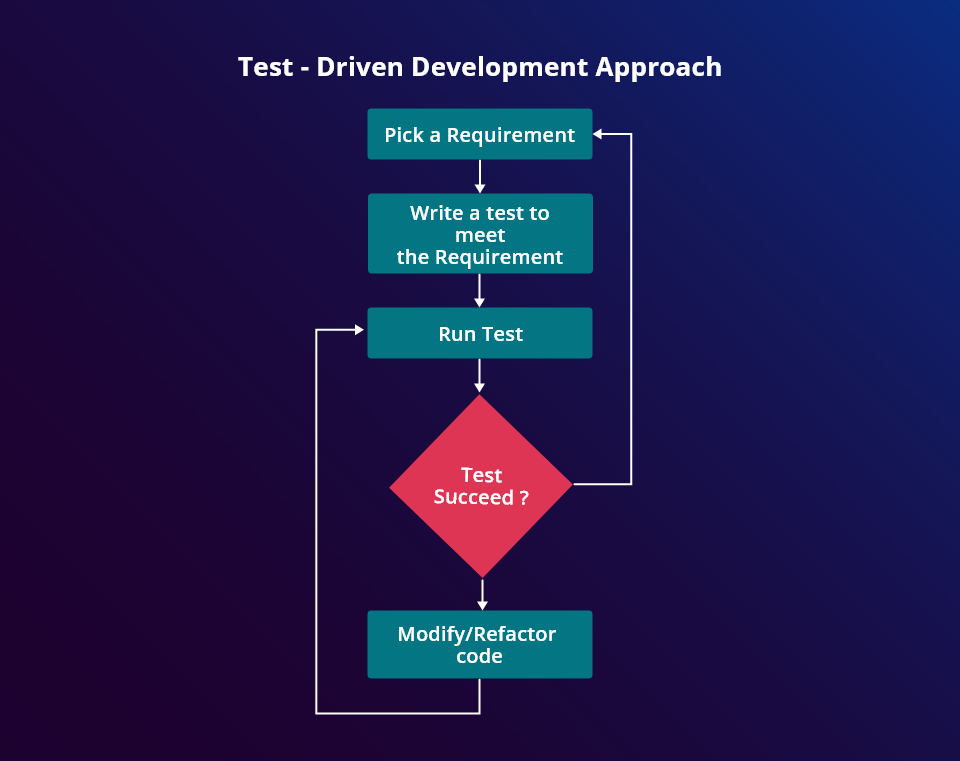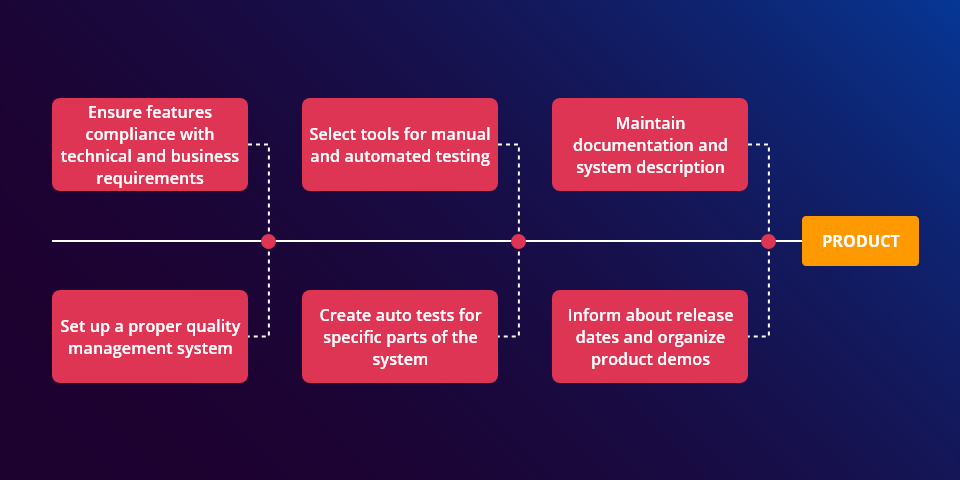When do we need QA in the product lifecycle?
QA or quality assurance is the team constantly working with the product development team to ensure a bug-free, user friendly product. There is a myth around the QA team that they check the features of a product once deployed, which is a myopic view of the QA team. The QA team does test for the functionality of the features but the QA team also checks other non-functional things like usability, performance etc. at various stages of the product development lifecycle.
Role of QA in Product Development
QA starts to play an important role right from the validation stage during requirement analysis and continues to contribute to support post launch. The stages of QA roles can be broadly categorized into the following:
Requirement Analysis
Requirement analysis serves as a foundation for test plans and project plan. It also serves as an agreement between the customer and the development team. QA ensures that the requirement agreed upon between business analyst and customer can be defined by some metrics. QA raises and tracks defect or clarification against the specification document. Building High level test scenarios, Requirement Understanding Document, and Traceability Matrix are some of the contributions of the QA team at this stage.
Design
QA Team checks for verifiability and testability of a design. It also checks if the design architecture meets all the functional and non-functional requirements. The QA team also creates the Data Flow Diagram in collaboration with the UI/UX designers.
Development
The QA role may start once a software is developed or may run parallel with the development team in a TDD (Test Driven Development) process. In a TDD environment the test cases are prepared by QA Engineers even before the actual code is written.

QA Specialists prepare for the testing and integration plan during this phase. They also draw up plans for automated tests. While developers take care of the functional implementation for individual units, QA engineers are concerned about how they integrate to form a complete system adhering to stability and performance standards.
Post-release QA
Once the software is released the QA team continues to support for the maintenance and improvement of software. They continue to monitor the software and ensure it is performing as expected. If any bug is detected then the QA team will work with the development team to fix this. Once changes are introduced to the software the QA team performs Regression test to ensure that no new issues have been introduced as a result of this. The QA team also collects feedback from users to identify areas of improvement and work with the development team to implement these changes.
Functional and Non Functional Testing
Functional Testing
Functional testing implies the testing of software features and functions. Functional testing intends to uncover the internal behavior of the software and its interaction with other systems. Functional testing can be manual or automated. Following are the types of functional testing:
- Unit testing
- Integration testing
- End-to-end testing
- System testing
- Smoke testing
- Sanity testing
- Acceptance testing
- Regression testing
- White box and black box testing
- Interface testing
Non-functional Testing
Non-functional testing is the next step after functional testing. Non-functional testing intends to account for other non-functional aspects of a software like the performance, usability, security etc. Non-functional testing is always automated considering the complex nature of the test. Following are some of the examples of non-functional testing:
- Performance testing
- Security testing
- Load testing
- Reliability testing
- Usability testing
- Scalability testing
- Compatibility testing
- Volume testing
- Stress testing
- Maintainability testing
- Compliance testing
- Efficiency testing
Specialists of a QA team
The QA team executes diverse roles and responsibilities. The team consists of various professionals with some fundamental roles related to the testing process. The key roles that complete the QA team structure are:
QA Manager/Test Manager
QA Manager or Test Manager heads the entire QA team. As a department head of the QA department he plans test strategy, creates to-do list, and assigns roles. He is a bridge between the QA team and development team ensuring everyone is on the same page. A QA manager also does test audits, calculates testing budget, and sets the metrics for project quality. They are the backbone of a great software testing team.
QA Team Lead/ Test Lead
A QA team lead coordinates and supervises the activities of an entire QA team. QA team lead decides where to direct the efforts when errors occur. They are also entrusted with creating and maintaining test plans as well as documenting test results.
QA Architect/ Test Architect
QA architect is responsible for creating the test infrastructure. This ranges from choosing and setting up the testing tools to configuring the test environment. A test architect understands the requirements and aligns it with the company’s resources and infrastructure bringing up a feasible solution.
Manual QA Engineer/ Automation Engineer
QA Engineers are the ones who performs test and report to the developers on detecting some error. Manual testers analyze the requirement, develops test cases, and performs test to detect anomalies. Automation testers prepares the scripts for automated testing. They check the software performance in specific conditions, such as lead, stress, spike tests, etc.
QA Analyst/Test Analyst
This role is very close to the business analyst role. They collect all the project information, evaluates risk and weaknesses, and create detailed documentation for QA engineers to follow. They liaise with the business analyst and product owners to understand the requirements and convert them into testable conditions for the QA team.
Benefits of QA in Product Development
Secures Software
Quality assurance eliminates vulnerabilities and shortcomings in a software making it safe from malevolent attacks. Some of the important roles of QA to increase cyber security are Incident response, threat modeling, penetration testing, compliance testing, and configuration management.
Improves Developer Productivity
The QA team frees up developer time as they can only stick to development and don’t have to go looking for bugs. This also creates a second layer of usability check and can catch important loopholes that the developers might have overlooked.
Improves Customer Loyalty
A software development team with a dedicated QA support ensures utmost quality of a software. There is always a double checking of features and other quality factors before it touches the market. This in turn hands over a flawless product to the customer increasing their trust and loyalty.
Prevents Emergency
A diligent QA process ensures that emergency situations are avoided as far as possible. An undetected bug can lead to important services being suspended for hours or loss of non-recoverable data. Similarly, an internal flaw can lead to security breach and loose the face of product keeping aside financial loss and legal complications. A QA prepares the support and maintenance team to avert such incidents.
Saves Development Costs
Involvement of QA from the requirement analysis stage faces the product development team with the question “Why we need this?”. Any unnecessary feature detected at the time of deployment may cost five times more than if it was aborted while drafting the test plan. Also security breaches, non-compliance, or a bug in production can cost a lot of money to the company which can be averted by adopting some QA processes during the initial stages.
Conclusion
It is evident that the QA team is essential to product development right from the requirement gathering stages throughout the maintenance phase and lifecycle of the product. The cost of maintaining a QA team is nominal considering the productivity and financial value it adds and is an indispensable preemptive measure for today’s products.
A top notch QA team assures to save your time through the use of standardized processes and automation, deliver high-quality software for customers, and prevent expensive mistakes.

